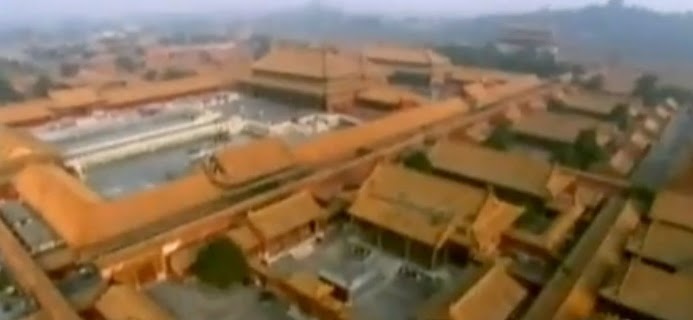There are three valuable imperial seals used by Emperor Qianlong during his reign of the Qing dynasty more than 200 years ago. The three seals are linked together with 3 three separate chains so that they become inseparable. Qianlong had several thousands seals (now kept in the palace museum) made from all sorts of materials from jade, chicken blood stones and shoushan stones. He actually liked the three chained-seals so much that he would carry them wherever he went. The seals had been passed down to his descendants and the last emperor of Qing dynasty, Puyi.
.jpg) |
| Qianlong Emperor |
.jpg) |
| Three chained-seals of Qianlong |
The three-chained seals were made from the most precious type of Shoushan stone known as Tianhuang. The seals and chains were all carved from a single piece of raw boulder of Tianhuang and there was no evidence of any piece being artificially joined together. The intricacy of these seals shows that over 200 years ago, craftsmen had already grasped the skills and ability to carve intricate designs on stones to make seals. To carve three seals linked together using chains from a single boulder, a lot of precious materials would be wasted. Imagine the cost of Tianhuang in today's price (over 20000 per gramme), the cost to make the seals would be incredibly high. Anyway, it is almost impossible to find a Tianhuang boulder of that size (even if one is willing to sacrifice this precious material as it is wasteful to carve such a thing). This shows the wealth of the emperor during those days. A small Tianhuang seals weighing just 300 g was auctioned for over 11 million dollars in China recently. Another Tianhuang paper weight weighing 200 g was auctioned in HK for over 40 millions.
.jpg) |
| Raw Tianhuang stones |
The seals were made in two square shapes and one oval shape with the inscriptions that characterized Qianlong's style of governing the nation and his yearning for peace and harmony.
An interesting tale about the seals is that when the Qing dynasty collapsed and the last emperor, Puyi, was forced to leave the Imperial Palace in1924. Puyi took with him some treasures from the palace and the three chained-seals and stayed in a residence of another prince.
In 1925 with the help of Japanese spies, Puyi went to Tianjin where he stayed for 7 years before leaving for Changchun in Manchuria. During the war, he was made a puppet emperor of China based in Mongolia by the Japanese forces. The Japanese were using him as a figure head to justify their relentless occupation of the north east of China.
When world war 2 ended and the Japanese forces finally surrendered, Puyi tried to flee Changchun. As he was not able to carry most of the treasures he took with him when he fled the Capital, he only took the seals with him. However, he was stopped by the Russian forces just when he was about to catch a flight out of Changchun. He was later brought back to Moscow as a prisoner of war.
When the civil war ended, Puyi was sent back to China and became a war criminal in a prison in Beijing. Soon after, the Korean war broke out and everybody in China was raising funds for the war. While in prison, Puyi had an idea. He wrote to the government willing to donate the thee chained-seals as his own contribution to raise funds for the war. He did it to find favour with the government hoping for an early release from prison.
After many incidents and turmoil, the three chained-seals of Qianlong emperor finally returned to China. They are now house in the palace museum in Beijing. One could imagine the importance and value of these seals. Of all the treasures Puyi could have taken with him while he was on the run, he only took with him the seals. They must have meant a lot to him.
 |
| Palace Museum in Beijing |
In the 90s, the government issued a stamp featuring the three chained-seals. This stamp would show the world the use of Tianhuang in seal carving, its monetary and historical value as a precious material.


.jpg)
.jpg)
.jpg)
.jpg)
.jpg)
.jpg)
.jpg)
.jpg)
.jpg)
No comments:
Post a Comment